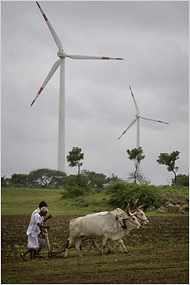 Investors reacted lukewarmly to the passage of the “beyond midnight” fiscal cliff compromise that left Democrats unhappy and Republicans, well, unhappy. When investors react with a mere “meh” to a bipartisan deal that averted what we were told was the potential end of the world as we know it, that might mean one of two things.
Investors reacted lukewarmly to the passage of the “beyond midnight” fiscal cliff compromise that left Democrats unhappy and Republicans, well, unhappy. When investors react with a mere “meh” to a bipartisan deal that averted what we were told was the potential end of the world as we know it, that might mean one of two things.
One, no one really cares what comes out of Washington anymore because they’ve lost faith that any true bipartisanship exists. As I delve into hypothesis two, you’ll start to sense why I’m kind of a fan of hypothesis one. Occam’s Razor, kinda thing.
Second, they may be temporarily soothed by the bandaid, holding out for the next two months in the stock market until the next…DOOMSDAY… Given that the fiscal cliff deal signed basically puts a bandaid on so many of our societal problems, this hypothesis has some merit. There were many pundits that argued we should Thelma & Louise ourselves over the imaginary cliff and hope for a good squirrel suit to guide us to a soft landing. By letting the fiscal cliff come and go without a new deal, the Bush tax cuts that were supposed to be temporary would have, in fact, been temporary. Yes, that means that taxes would have gone up for everyone, but we do know that if there is only one type of legislation that can pass, it’s a brand new tax cut. So it would have been maybe 3, maybe 4 seconds before new tax cuts were proposed on the floor of the Senate. Yes, unemployment benefits for 2 million Americans would have disappeared, but by law, they should have already, and they’ve been extended multiple times despite an improving economy. But the biggest support for this theory is that investors also understand that there is another looming doomsday in just 2 months, as Congress hunkers down to do nothing about raising the debt ceiling. C-Span will really be exciting then!
As for what the deal means for the sustainable economy, several big issues were, at least temporarily, covered in the deal.
First, the wind energy tax credit that became so contentious in the Presidential election, and really helped President Obama in places like Iowa, was extended for another year. While one more year may not seem like much, one major definition was also changed–instead of only providing tax credits for projects completed by the end of the year, it provides tax credits for projects underway by the end of the year. It’s a slight shift in wording with massive implications, as the American Wind Energy Association has pointed out that many wind farms take a long time to complete, and given this flexibility, we might see a lot more investment in wind energy from the private sector and public utilities.
So why is Vestas (one of the biggest wind energy companies in the world) laying off workers? (…this article continues)



